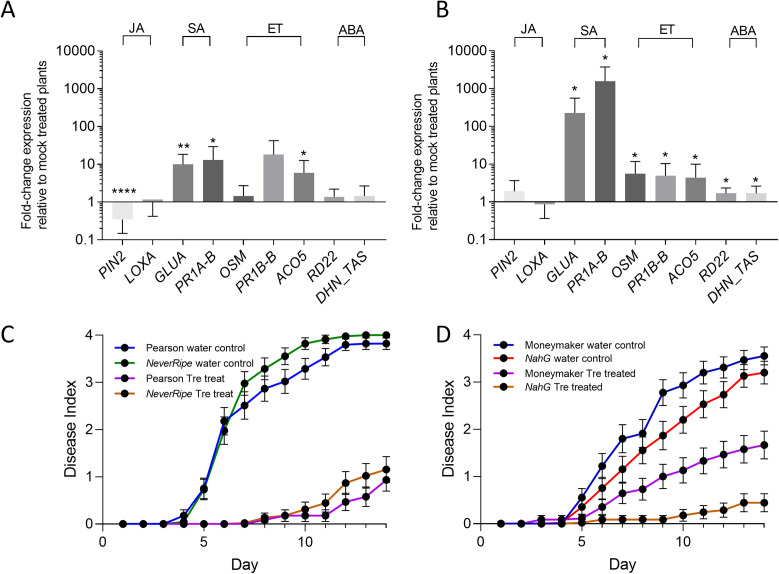Fig 5. Exogenous trehalose treatment affects expression of hormone-responsive tomato defense genes, and trehalose-mediated disease resistance is partially regulated by salicylic acid signaling.
Effects of trehalose treatment on expression of diverse defense genes in Bonny Best tomato stems, determined by qRT-PCR at A) 6 h and B) 48 h after trehalose treatment at the roots (one-sample t-test to a hypothetical mean of 1.0 where 1.0 = no difference in expression; asterisks: *, P = .01-.05; **, P = .001-.01; ***, P = .0001-.001; ****, P < .0001). Expression levels are shown as fold-change relative to those in mock (water)-treated plants. Data represent three biological replicates per time point, each containing five plants per treatment. Bars represent standard deviation. C) Wilt disease progress following R. solanacearum inoculation of water- or trehalose-treated NeverRipe ET-insensitive tomatoes and their parent cultivar ‘Pearson’ (one-way ANOVA of Area Under the Curve or AUC; ‘Pearson’ H20 vs. NeverRipe H20, P = .91; ‘Pearson’ tre vs. NeverRipe tre, P = .98). D) Wilt disease progress following R. solanacearum inoculation of water- or trehalose-treated SA-insensitive NahG over-expressing plants and their parent cv. Moneymaker (one-way ANOVA of AUC, Moneymaker H20 control vs. NahG H20 control, P = .74; Moneymaker tre vs. NahG tre, P = .04). For C) and D) plants were treated at the roots with trehalose, then inoculated with R. solanacearum via soil drenching 48 h later. Data represent three biological replicates, each containing 15 plants/treatment (45 plants total). Bars represent standard error.

